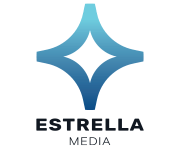How Media Buyers should approach Display Campaigns.
June 13, 2011
Not long ago, display advertising was considered merely a direct-response vehicle. But with the rise of online video, the increasing success of Facebook and ongoing improvements to audience targeting and buying technology like real-time bidding (RTB), media buyers are returning to display with big hopes—and even bigger ad budgets. eMarketer estimates display spending will reach $12.33 billion this year, nearly two-thirds of which will go toward standard banners.
Today’s display ad buyer must navigate hundreds of inventory providers, including ad exchanges, ad networks and publishers, to emerge with a successful media plan. By approaching the ad buying process objective-first, media buyers can pinpoint select sources to efficiently craft display campaigns.
“The need for better audience scale and efficient inventory purchasing has fueled the rise of ad exchanges and real-time buying platforms,” said eMarketer’s Lauren Fisher, author of the new report, “Buying Display Ad Inventory: Making Sense of Multiple Sources.” “Media buyers are turning to these ad exchanges and demand-side platforms (DSPs) for their massive reach and audience scaling capabilities.”
The efficacy of each display ad source and inventory buying method depends greatly on campaign objective. Premium inventory sources that work well for brand-based objectives might not work as well for direct-response advertisers looking to retarget site visitors.
For example, premium publishers and ad networks—often used for relevant content or contextual targeting—can be effective at generating brand awareness, according to DIGIDAY and DataXu.
“By focusing on objectives, marketers can best determine the appropriate mix of providers that will most likely help them to meet and exceed their advertising goals,” said Fisher.
For more information at http://www.emarketer.com



























